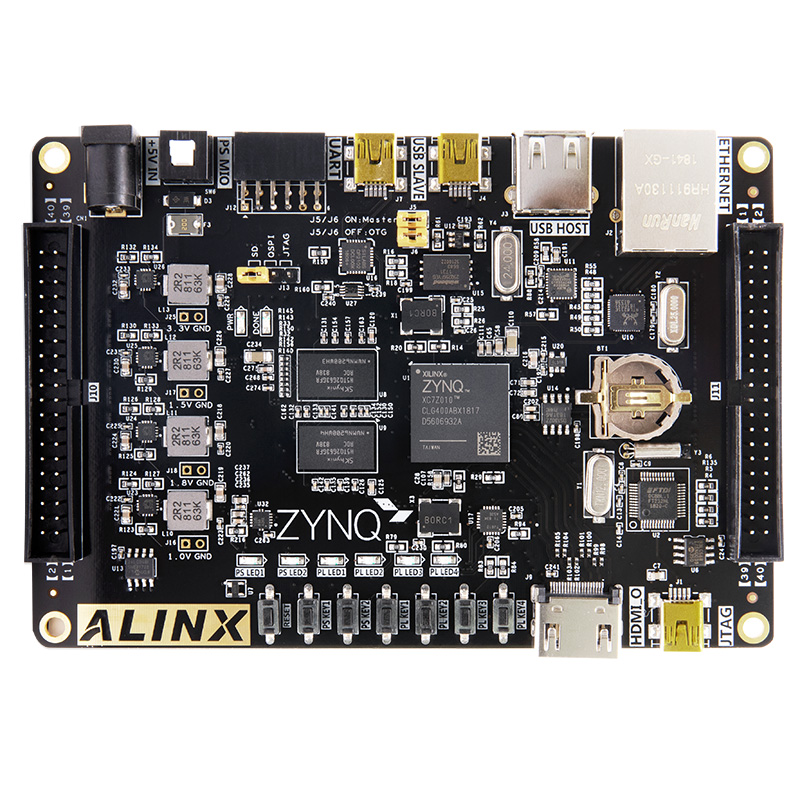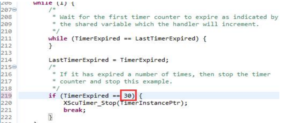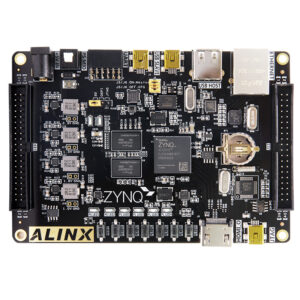
Introduction
In the realm of embedded systems, the evolution from basic microcontrollers to sophisticated Field Programmable Gate Arrays (FPGAs) represents a monumental leap. This transition not only enhances the capabilities of embedded systems but also opens up a new horizon for innovation and efficiency. In this blog, we will delve into the history of microcontrollers, the rise of FPGAs, and the pivotal role of the Zynq processor in transforming system design. We will also explore how Tenet Technetronics is at the forefront of this revolution, offering comprehensive development tools, training, and consulting services. Finally, we will touch upon the Alinx FPGA development boards and their availability in India through Tenet Technetronics.
The Journey of Microcontrollers
Microcontrollers have been the backbone of embedded systems since their inception. Originating in the 1970s with Intel’s 4004 and 8008, microcontrollers rapidly evolved to include more powerful variants like the 8051 and the PIC microcontrollers from Microchip. These devices integrated a CPU, memory, and peripheral interfaces on a single chip, making them ideal for controlling small, dedicated tasks in consumer electronics, automotive systems, and industrial automation.
However, as the demand for more complex and high-performance applications grew, traditional microcontrollers began to show their limitations. The need for higher processing power, real-time data processing, and greater flexibility led to the exploration of more advanced solutions.
The Rise of FPGAs
Enter the Field Programmable Gate Array (FPGA), a type of programmable logic device that offers unprecedented flexibility and performance. Unlike microcontrollers, which come with a fixed architecture, FPGAs allow designers to configure the hardware to meet specific requirements. This configurability makes FPGAs ideal for applications that require high-speed data processing, parallel processing capabilities, and customization.
FPGAs found their initial applications in telecommunications, military, and aerospace industries, where their ability to handle complex algorithms and high data rates was highly valued. Over time, their use expanded into other sectors, including automotive, healthcare, and consumer electronics.
The Game-Changing Zynq Processor
Among the various FPGA solutions, the Zynq processor from Xilinx stands out as a game-changer. The Zynq-7000 series combines the flexibility of an FPGA with the processing power of a dual-core ARM Cortex-A9 processor. This unique architecture allows for a seamless blend of software programmability and hardware configurability, enabling the creation of highly optimized and efficient systems.
Key Features of the Zynq Architecture
- Processing System (PS):
- Dual-core ARM Cortex-A9 processors.
- Integrated peripherals like USB, Ethernet, and SD controllers.
- Memory interfaces for DDR3/DDR4, QSPI, and NAND.
- Programmable Logic (PL):
- High-density FPGA fabric with configurable logic blocks (CLBs).
- DSP slices for high-speed signal processing.
- Block RAM for on-chip storage.
- High-speed I/O pins for interfacing with external devices.
- Interconnects:
- Advanced extensible Interface (AXI) for high-bandwidth communication between PS and PL.
- AXI Interconnect IP to customize data paths and manage data flow.
- Security:
- On-chip cryptographic engines for secure boot and data encryption.
- Trust Zone technology for secure application execution.
Why Zynq is Special
- Heterogeneous Processing: The integration of ARM processors and FPGA fabric allows designers to partition tasks efficiently between software and hardware, optimizing performance and power consumption.
- Real-Time Processing: The FPGA fabric can be tailored to handle real-time processing tasks that require low latency and high throughput, such as video processing and signal analysis.
- Customization and Flexibility: The programmable nature of the FPGA fabric enables the creation of custom accelerators and peripherals, providing a high degree of flexibility to meet specific application requirements.
- Scalability: The Zynq family offers a range of devices with varying amounts of FPGA fabric and processing capabilities, allowing designers to scale their solutions based on performance and cost requirements.
Challenges and Considerations in Zynq-Based Design
While the Zynq architecture offers immense potential, it also presents several challenges that designers need to address:
- Complexity: The integration of PS and PL requires a deep understanding of both software and hardware design principles. Proper partitioning of tasks between the ARM processors and FPGA fabric is crucial for optimizing performance.
- Toolchain Mastery: Proficiency in development tools like Xilinx Vivado and SDK is essential for efficient design and debugging. Designers must be adept at using these tools to manage the design flow, from synthesis to implementation and verification.
- Power Management: Efficient power management is critical, especially in battery-operated applications. Designers need to optimize power consumption through careful planning of power domains and dynamic power gating.
- Security: Implementing robust security measures is vital to protect sensitive data and ensure the integrity of the system. Designers must leverage the security features of the Zynq architecture, such as secure boot and encryption.
Tenet Technetronics: Pioneering FPGA-Based System Design
At Tenet Technetronics, we are committed to empowering engineers and developers with the tools and knowledge needed to harness the full potential of FPGAs. Our comprehensive offerings include:
- Development Tools: We provide a wide range of development boards and tools that facilitate FPGA-based system design. Our selection includes Alinx FPGA development boards, known for their reliability and performance.
- Training Programs: Our training programs cover various aspects of FPGA design, from the fundamentals of VHDL/Verilog to advanced topics like getting started with Zynq. Our curriculum is designed to cater to both beginners and experienced professionals, ensuring a solid understanding of FPGA technology.
- Consulting Services: Our team of experts offers consulting services to help businesses integrate FPGA solutions into their products. We provide guidance on system architecture, design optimization, and implementation, ensuring a smooth transition to FPGA-based systems.

A Sample Syllabus for FPGA Training Program can be found below :
Module 1: Introduction to FPGAs
- Overview of FPGA technology
- Comparison with microcontrollers and ASICs
- Applications and use cases
Module 2: VHDL/Verilog Fundamentals
- Basics of VHDL/Verilog
- Syntax and semantics
- Writing and simulating simple designs
Module 3: Getting Started with Zynq
- Introduction to Zynq architecture
- Setting up the development environment
- Basic hardware and software integration
Module 4: Advanced Zynq Topics
- AXI protocol and interfacing
- Real-time data processing
- Implementing custom IP cores
Module 5: System Design and Optimization
- Design flow and methodologies
- Debugging and verification techniques
- Performance optimization strategies
Module 6: Power Management and Security
- Strategies for efficient power management
- Implementing security features
- Case studies on secure and power-efficient designs
Alinx FPGA Development Boards
To support your FPGA development journey, we offer a range of Alinx FPGA development boards. These boards are renowned for their robustness, extensive feature sets, and ease of use. Whether you are a hobbyist, a researcher, or a professional developer, our Alinx boards provide a reliable platform for your projects.
Conclusion
The transition from microcontrollers to FPGAs, particularly with the advent of the Zynq processor, marks a significant milestone in the evolution of embedded systems. By leveraging the power and flexibility of FPGAs, engineers can design systems that are not only more powerful and efficient but also highly adaptable to changing requirements. At Tenet Technetronics, we are dedicated to supporting this transition through our comprehensive range of tools, training programs, and consulting services. Explore the possibilities with our Alinx FPGA development boards and join us in shaping the future of system design.
For more information, visit our website or contact us at info@tenettech.com to learn more about our offerings and how we can help you get started with FPGA-based system design.







